
Allied troops wade to evacuation ships off the beach at Dunkirk.
Dunkirk was the largest of the multiple evacuations of British, French and Belgian troops from Northern France following the Allied loss of the Battle of France. Over the course of the evacuation, 330,000 men were transported from Dunkirk and the surrounding beaches to the UK.
The operation has become somewhat of a legend in Great Britain, thanks to the contribution of a large contingent of small boats (mostly pleasure cruisers, powerboats and fishing boats) crewed by civilians.
These assisted in carrying troops from the beaches to ships waiting offshore, and were lionised by the media, looking to boost morale following the fall of France.
The British Expeditionary Force (BEF) had deployed to France in September 1939. There, they joined the majority of the French army’s mobile forces along the Belgian border. The Allies assumed that any German attack on France would be forced through Belgium by the Maginot Line.
The British and French forces would, in such an event, advance into Belgium and meet the German thrust there. On the 10th of May 1940, the Germans attacked Belgium and the Netherlands, and the Allies moved to counteract this. However, this was not the main German thrust. Instead, this would come through the hills and woods of the Ardennes.
This was thought to be poor terrain for an armoured attack, and so had been poorly defended, so that the French force in Belgium could be as strong as possible.
The Allied forces in Belgium were originally deployed to hold the line of the Dyle river, but were ordered to retreat to the Escaut on the 14th. As they did so, the Germans pushed weak French forces back from the Meuse, and foiled several French counterattacks.
By the 20th, German units had reached the sea near Abbeville, trapping the Allied First Army Group in Belgium and the Pas de Calais. T
he Allies made several attempts to break out of the pocket, most notably the battle of Arras, but all came to nought. On the 23rd of May, Lord Gort, the BEF’s commander decided that the pocket could not be held, and began preparations for a withdrawal of his force.
Meanwhile, the Germans began their strike up the French coast, beginning attacks towards Boulogne on the 22nd-23rd, and Calais on the 23rd.
Dunkirk was the only port through which the Allied pocket could be supplied or evacuated. While the Germans made plans to attack it, on the 24th, an order to halt was given.
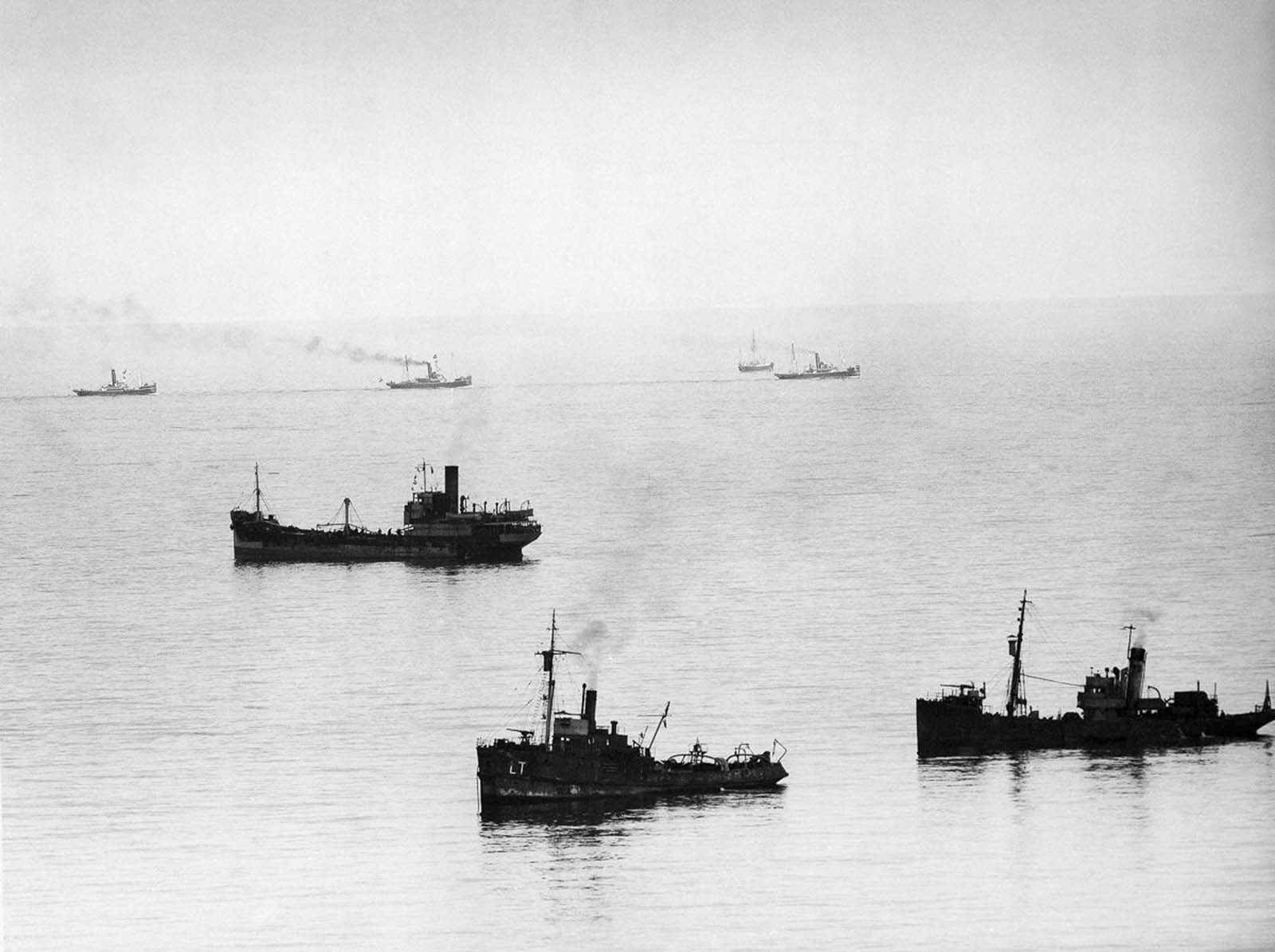
Allied minesweepers work to clear the English Channel while a convoy of evacuation ships head for Dunkirk.
This was given for several reasons; partly to allow the Germans to consolidate logistics for their forward units, partly because the British counterattack at Arras had demonstrated weaknesses in the German position that needed to be shored up, and partly because of the influence of Goering, the head of the Luftwaffe, who wished to demonstrate the power of his air force.
This gave the Allies time to withdraw, in the two days before the order was rescinded. A fighting withdrawal was carried out, and on the 26th, the British government made the decision to evacuate the BEF, though a portion of its rear-area troops had already been withdrawn.
At 18:57 on the 26th, the Admiralty ordered Admiral Bertram Ramsay, the Royal Navy officer commanding Dover Command, to carry out the evacuation (though transports had been crossing the Channel since 15:00), under the code-name Operation Dynamo. At this time, two ships were crossing between Dunkirk and Dover every four hours, carrying roughly 1300 men each trip.
Meanwhile, the Army was setting up a perimeter around the port. On the 27th, the Germans set up coastal batteries covering part of the main route between Dunkirk and Dover, meaning that transports had to take a longer route.
Despite this, the rate of sailings was increased to 2 ships every 3.5 hours. Captain W. G. Tennant was transported to Dunkirk to act as the RN’s representative ashore.
Finally, attempts were begun to lift troops off the beaches east of Dunkirk. Five transports began to travel this route, and during the night, 17 drifters were deployed.
To assist this, Ramsay began pressing for as many powerboats and launches to be passed to him. In the evening on the 27th, fears began to develop that the British forces inland might be cut off from Dunkirk.

Oil tanks burn on Dunkirk beach.
This caused a minor panic, and the RN began to send as many craft as possible to take troops off the beaches. Overnight, the transport Queen of the Channel was bombed and sunk.
On the 28th, the developing situation meant that Dunkirk harbour could be reopened, but only to warships and small vessels in daylight. The large ferries and similar transports were directed to the beaches in daylight, but could reenter the port at night.
The evacuation became a 24-hour endeavour. Ramsay received significant support from the rest of the RN on the 28th, receiving several flotillas of minesweepers, and every available destroyer from the Western Approaches and Portsmouth Commands.
On the 29th, a new route into Dunkirk was swept of German mines, allowing British transports to re-enter the port without fear of the coastal batteries.
The situation on the ground also stabilised somewhat, with the perimeter becoming more secure as more Allied troops packed into it. The German Luftwaffe made several attempts to bomb the town and the ships, but RAF air cover saw most of these attacks off.
However, there were losses; the British destroyer Wakeful was torpedoed by the torpedo boat S-30, with the loss of 600 men. While rescuing survivors from Wakeful, HMS Grafton was hit by a torpedo from the submarine U-62, though all but 16 men made it off her.
In the ensuing confusion, the minesweeping trawler Comfort was accidentally fired upon by Grafton and Lydd, before being rammed by the latter ship.
During the afternoon, Dunkirk Harbour came under heavy attack by German divebombers, sinking HMS Grenade, and damaging multiple other ships.
This effectively caused the closure of the port, and the withdrawal of most of the RN’s modern destroyers from the operation.

British Expeditionary Forces wade out to one of the “little ships” aiding the evacuation.
On the 30th, attempts were made to speed evacuation from the beaches. The Army constructed a pier of lorries on the beach at Bray. This was too unstable for use by larger ships, but was invaluable for small boats.
With much of Dunkirk’s harbour facilities destroyed by German bombing on the 29th, Tennant ordered the troops to be loaded onto ships from the harbour’s protective moles, greatly speeding the evacuation.
The withdrawal of the modern destroyers was found to have unacceptably reduced the available lift capacity, and so Ramsay protested vigorously. He succeeded and reclaimed six of them.
On the 31st, the evacuation was broadened to French troops – all men previously lifted from the beaches had been members of the BEF.
Evacuation work continued throughout the day, hampered somewhat by German shelling, and by onshore wind. However, the first civilian craft began to arrive.

British Expeditionary Forces queue up on the beach at Dunkirk to await evacuation.
The Admiralty’s Small Vessels Pool, which had been set up at the start of the war as a registry of small craft for such uses, had been busy inspecting suitable craft, and sending them over with or without their owners. These craft would prove to be invaluable in the evacuation of troops from the beaches.
They were used to shuttle troops out to the large transports and destroyers, which had too deep a draft to come into the beaches themselves.
These civilian boats were joined by a motley collection of small naval boats, landing craft, RAF recovery launches, and a London fire-boat.
In the afternoon, the Army informed Ramsay that its plan had changed somewhat, and that the final contingents were to come off in a completely different position than originally planned.
The early hours of 1st June saw further heavy German air attacks, which would continue throughout the day. These would sink three British destroyers, Basilisk, Havant and Keith, though thankfully with few casualties.
In addition, German shore batteries were moved into position to shell the main route remaining out of Dunkirk harbour. This led to the abandonment of daylight evacuation. Even so, 60,000 troops were evacuated on the 1st. The 2nd proceeded much as the 1st.
The hospital ship Paris was sunk while attempting to recover wounded men from Dunkirk harbour. She would be the last ship to make the journey, with the remaining troops coming over the beaches. By 23:30 on the 2nd, Tennant was able to send the message that the BEF had been evacuated.

British and French troops await evacuation on the beach at Dunkirk.
During the night of the 3rd, and the early hours of the 4th, 27,000 French troops were lifted off the beach at Dunkirk. After this, the Germans managed to break through the weak perimeter.
They failed to capture many British or French troops, but did capture large amounts of equipment and materiel, which the Allies had been forced to abandon.
Overall, Dunkirk was a triumph of naval organisation. Ramsay successfully directed a hugely complex operation, and exceeded expectations thoroughly. He would become one of the RN’s experts in amphibious operations, and (aptly) commanded the Allied fleet that landed at Normandy in 1944.
Operation Dynamo saw the rescue of a significant portion of the pre-war British army, who would go on to fight in several other major campaigns. Without them, the British war effort would have been significantly hampered.
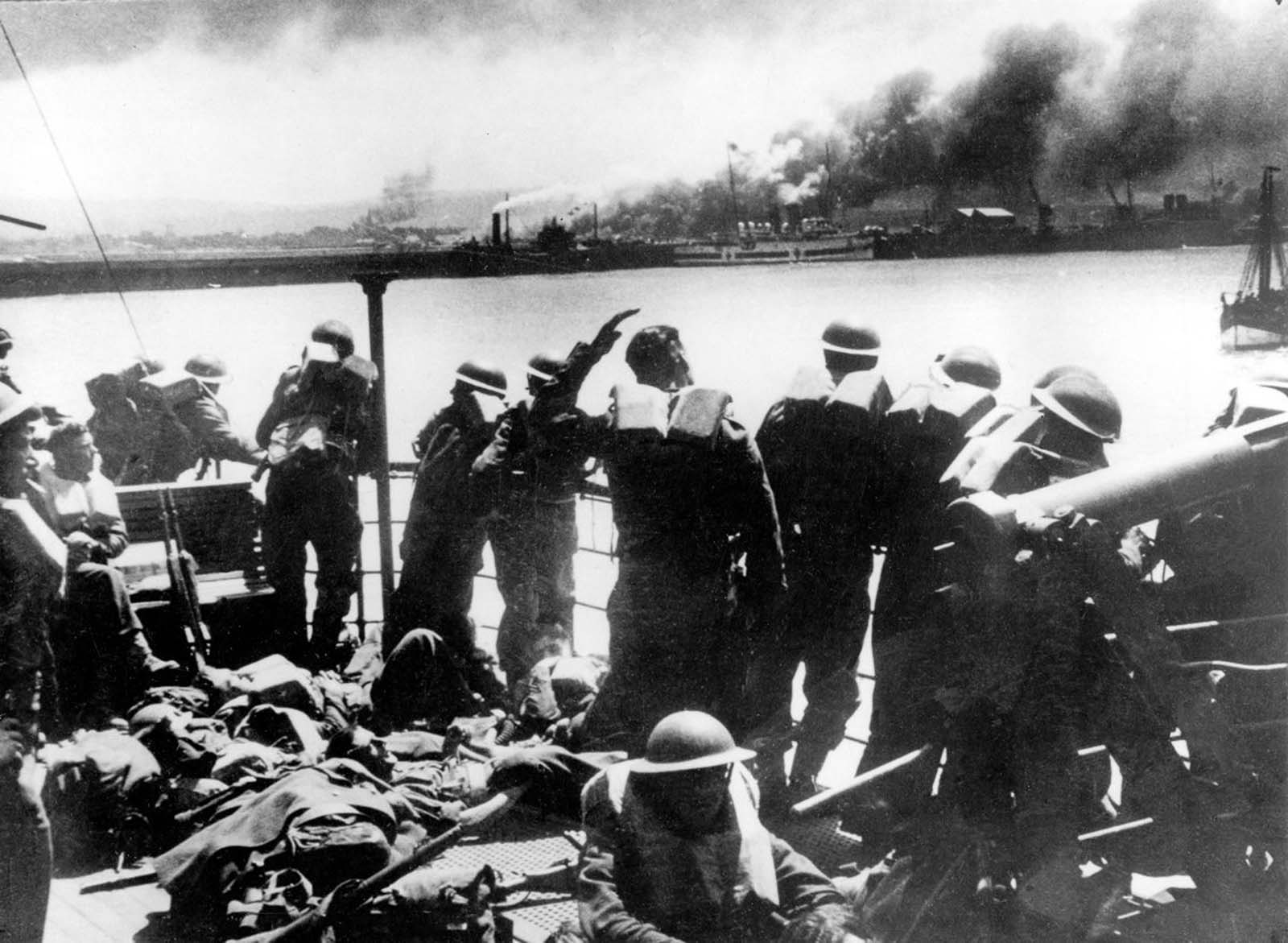
British Expeditionary Forces view the German bombardment of Dunkirk from an evacuation transport.

The town of Dunkirk while under bombardment.

A British ship rescues soldiers from a landing craft sunk during the evacuation.

British and French soldiers arrive safely at a British port.

British Expeditionary Forces queued up on the beach at Dunkirk as they await evacuation.

British and French troops wade out to evacuation ships off Dunkirk beach.

Allied soldiers climb aboard a ship during the evacuation of Dunkirk.
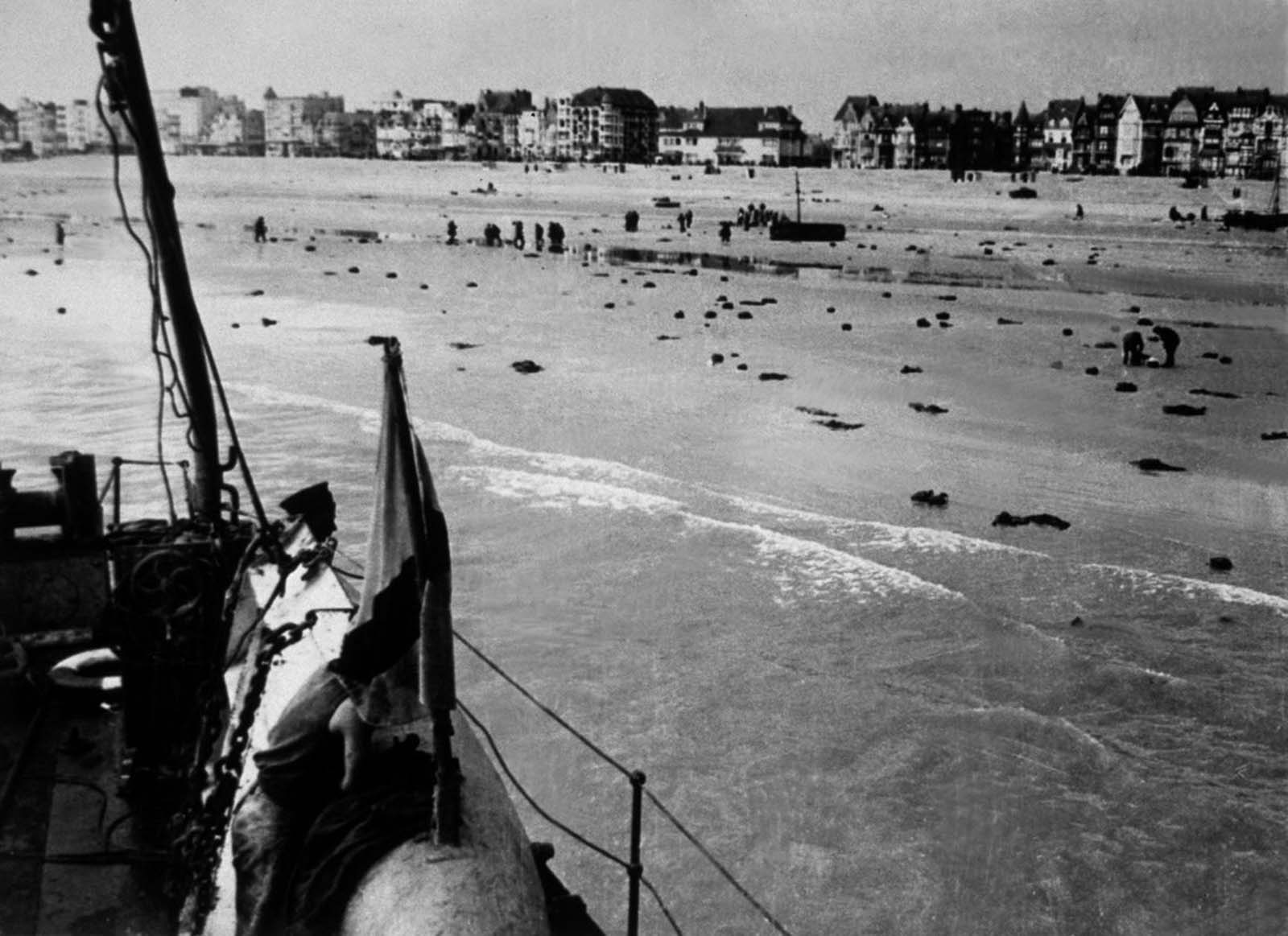
Discarded coats and equipment litter the beach at Dunkirk.
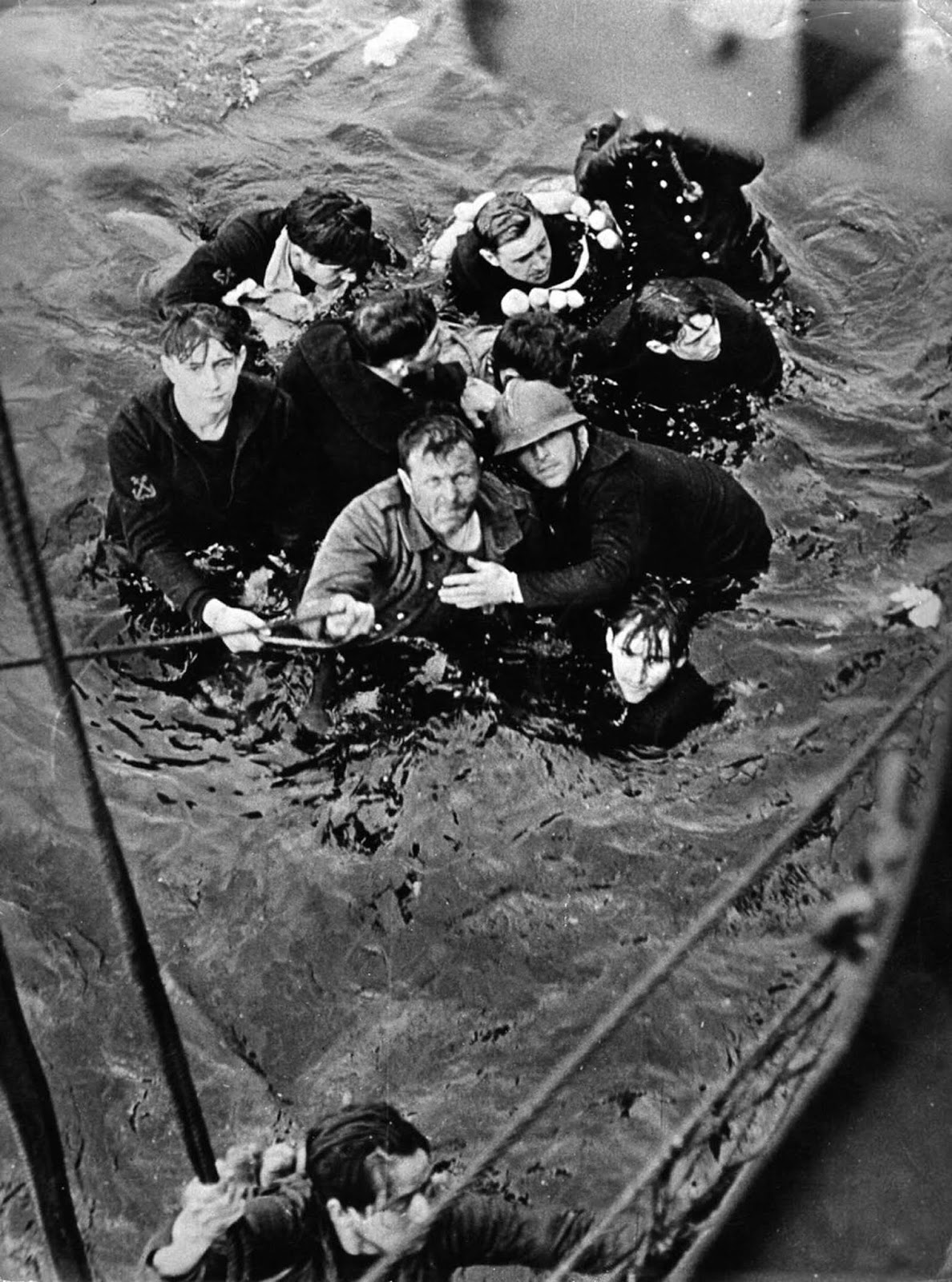
Crew members of the French destroyer Bourrasque, sunk by a mine at Dunkirk, are hauled aboard a British vessel from their sinking life raft.

Some of the last troops to be evacuated crowd aboard two civilian boats.

A British destroyer carries evacuees home while Dunkirk burns and the rearguard continues to fight.
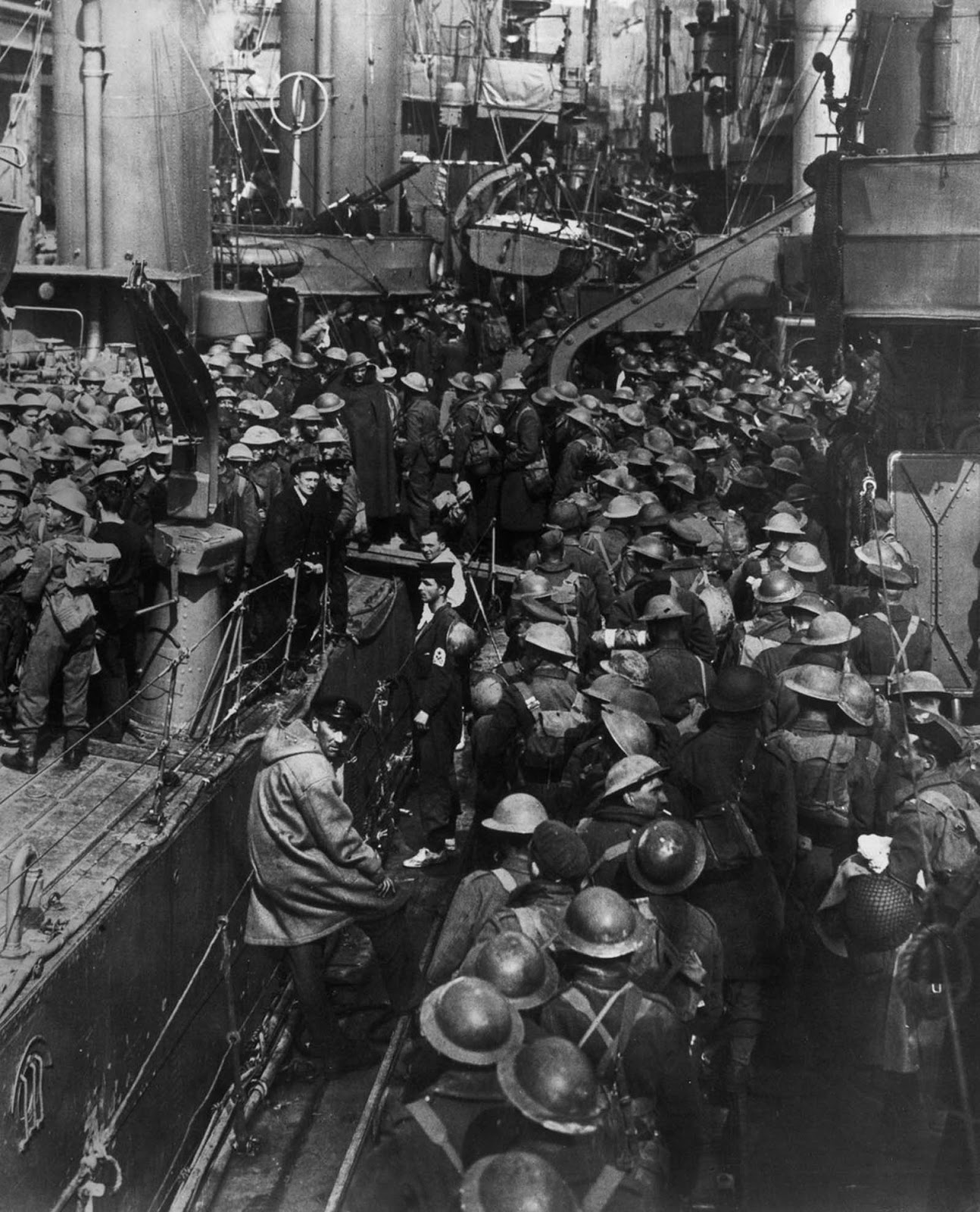
Allied troops crowd aboard ships during the evacuation of Dunkirk.
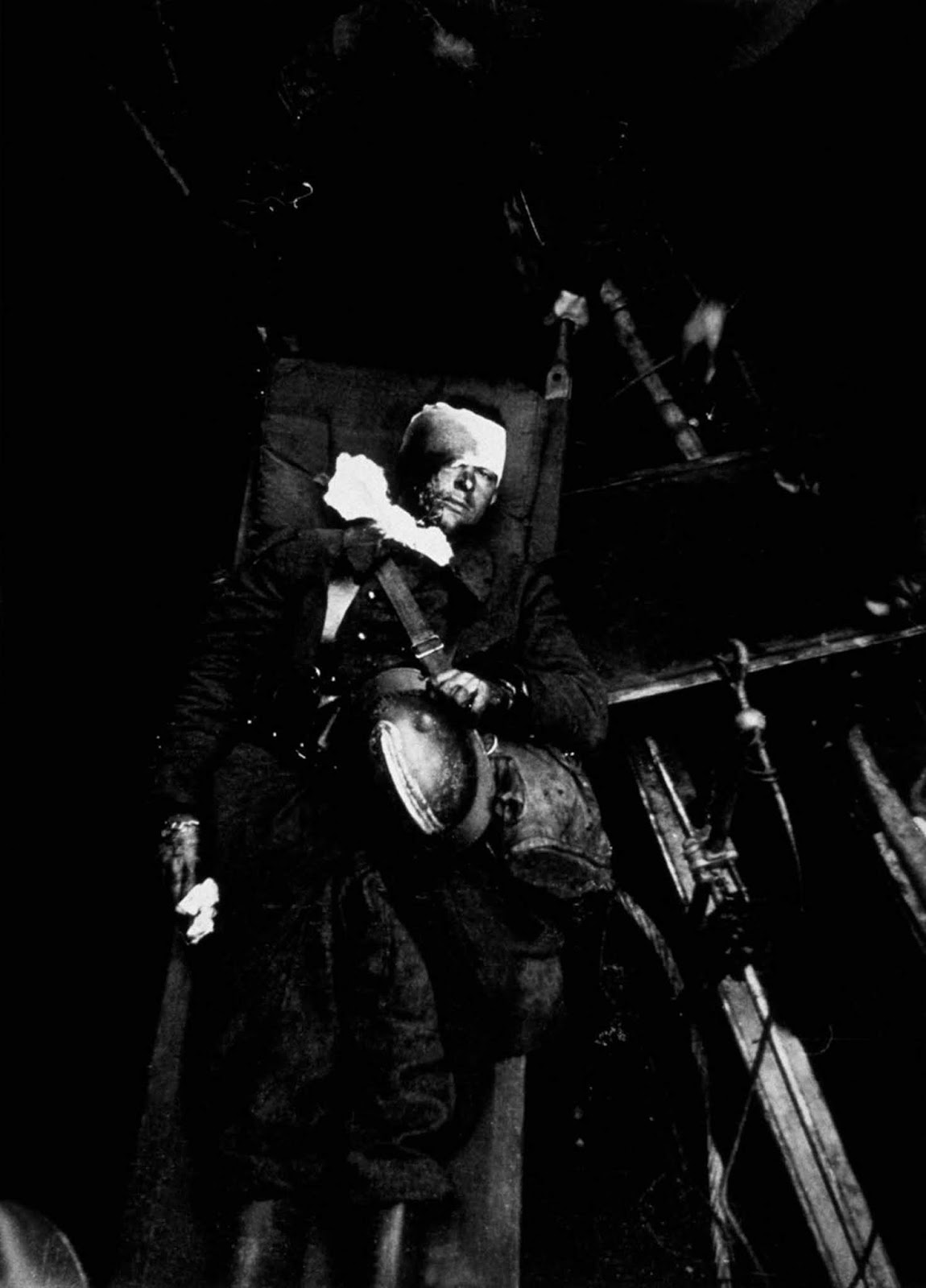
A wounded Frenchman arrives at Dover after being evacuated from Dunkirk.
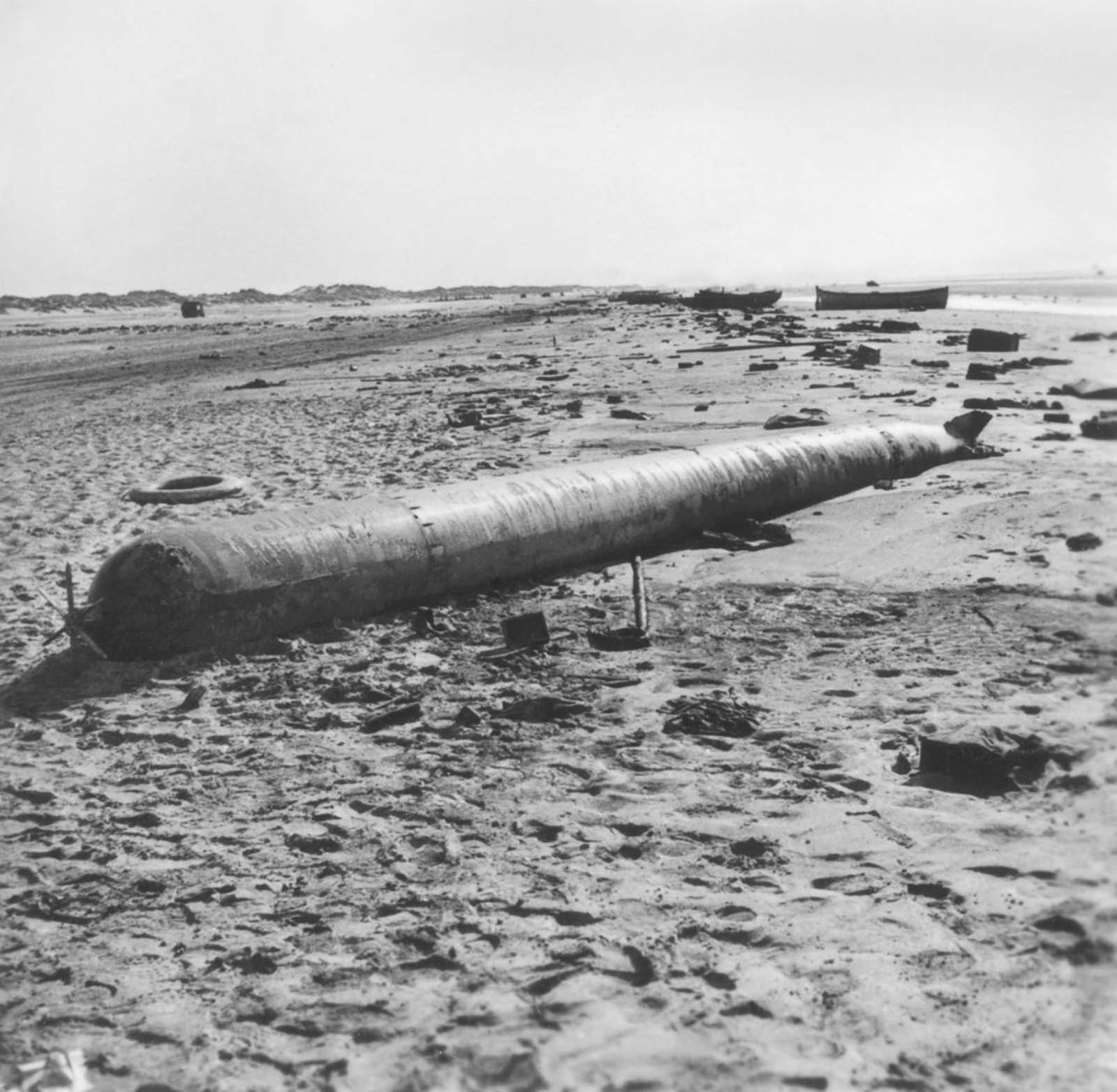
A beached torpedo lies among other abandoned equipment after the Allied evacuation.

Abandoned trucks and equipment line the beach after the Allied evacuation.

A German cameraman records the departure of the last Allied troops from Dunkirk.
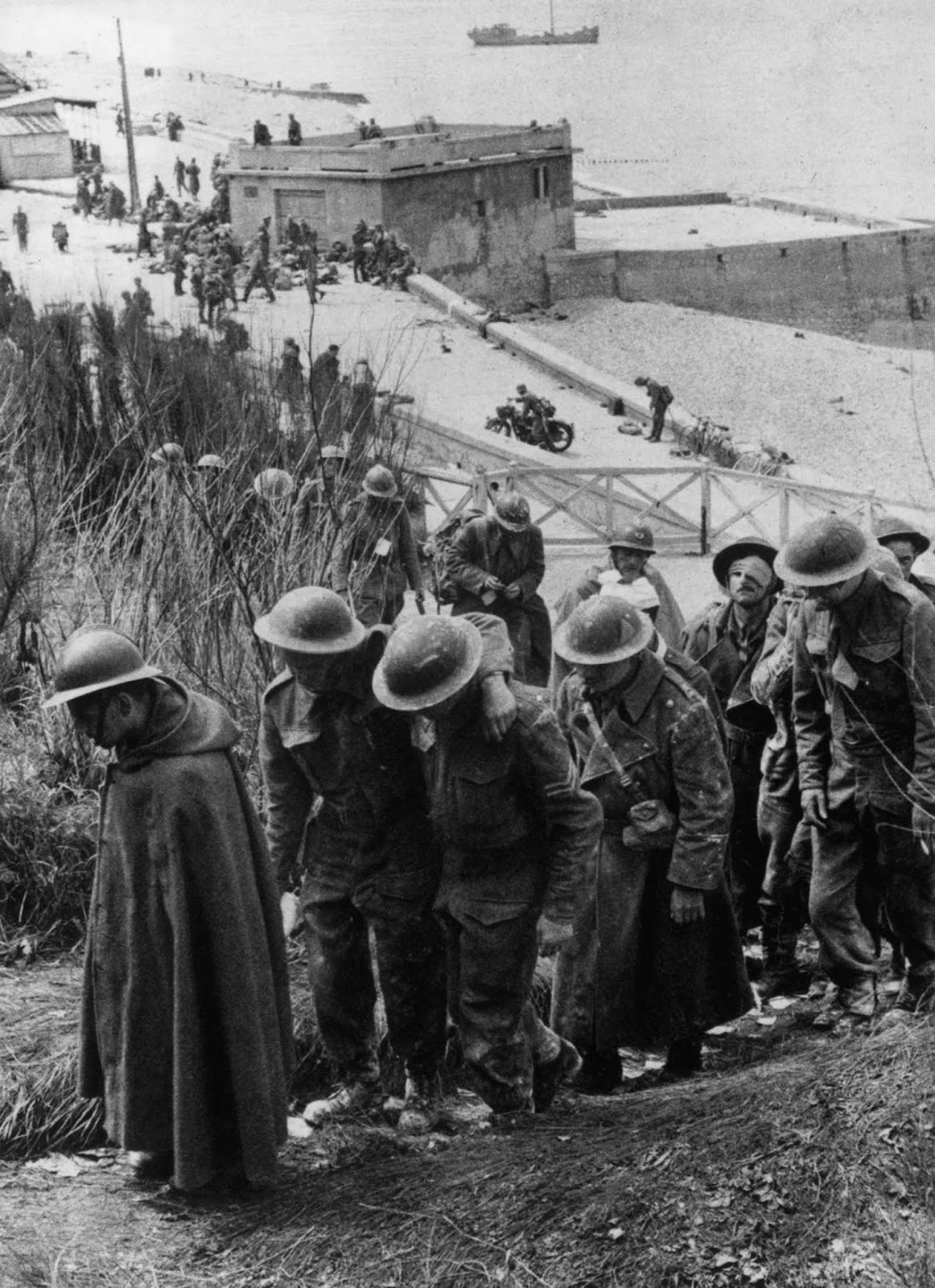
French troops are taken prisoner by the Germans at Dunkirk.

British soldiers sleep aboard a train after escaping from Dunkirk.

British Expeditionary Forces safely arrive back in England.

Allied soldiers enjoy food and drink upon returning to Britain.

British troops arrive safely back in London.
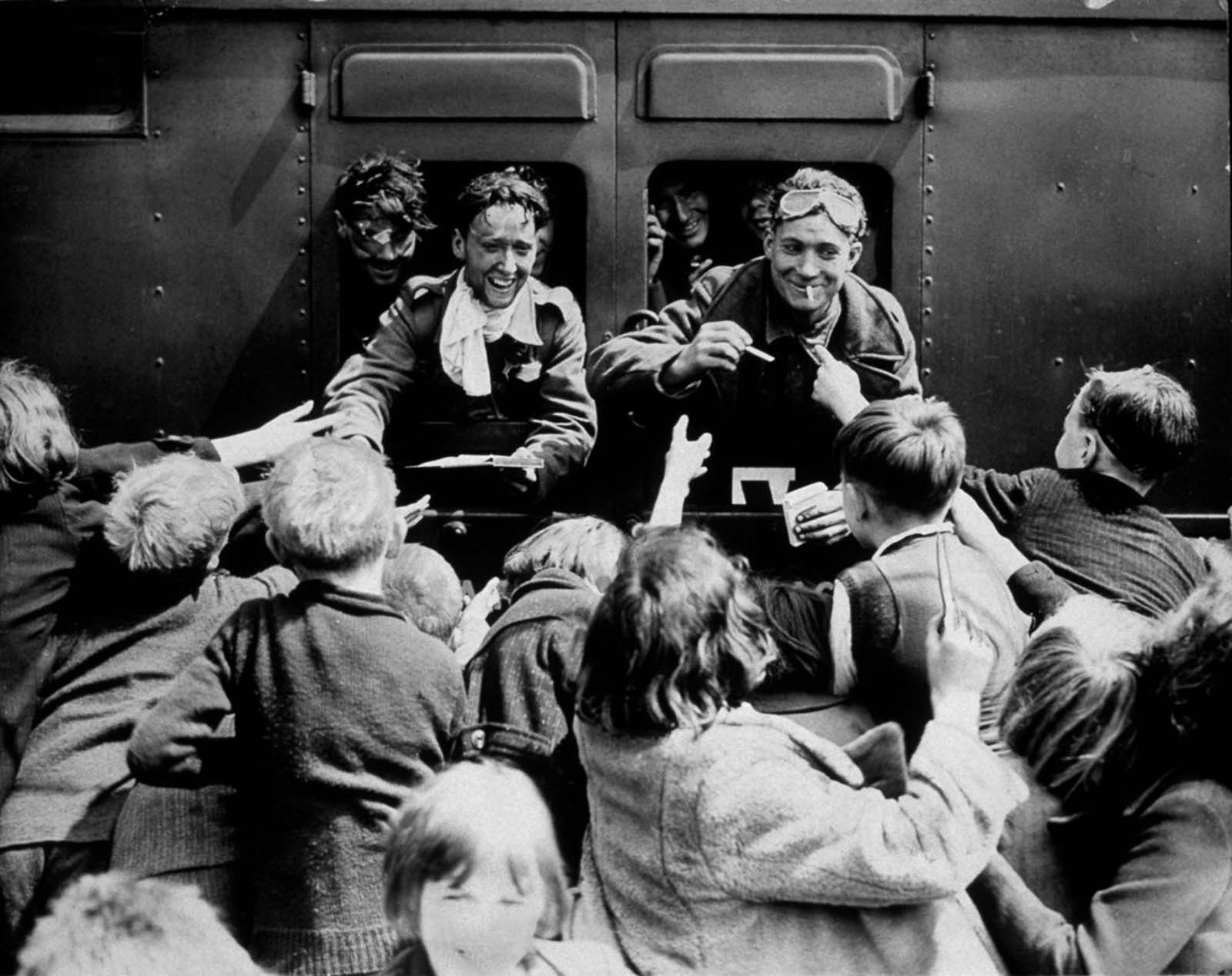
Children greet returning British soldiers.

A trainload of British Expeditionary Force soldiers arrives back in London.

A soldier of the British Expeditionary Force is greeted by his girlfriend upon arriving back home.
(Photo credit: Hulton Archive / Davis / Topical Press Agency / Getty Images).